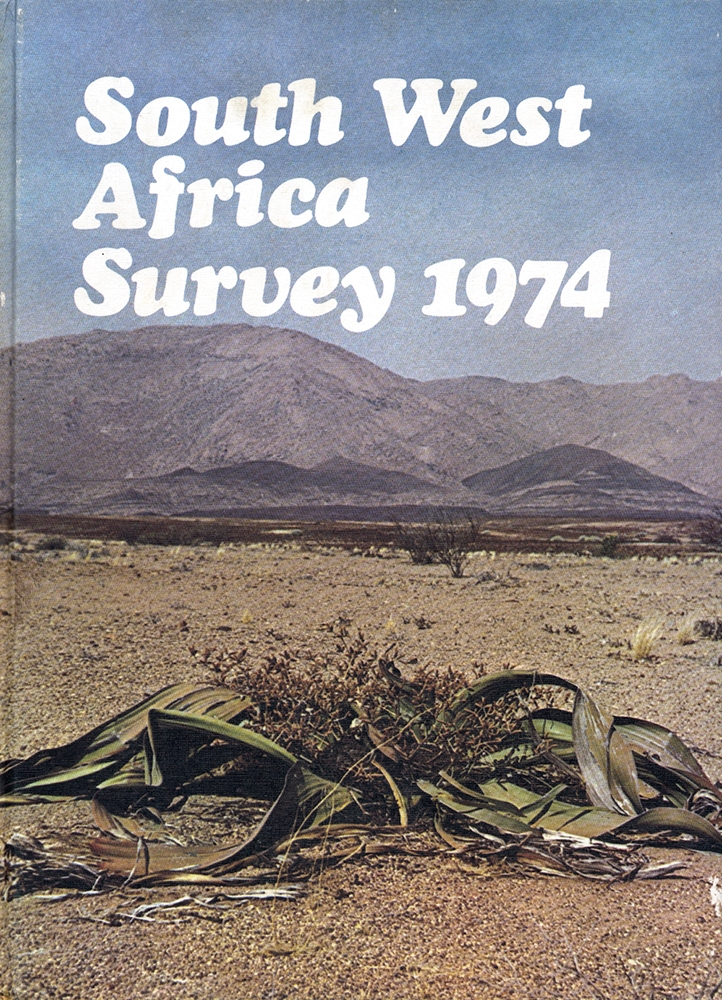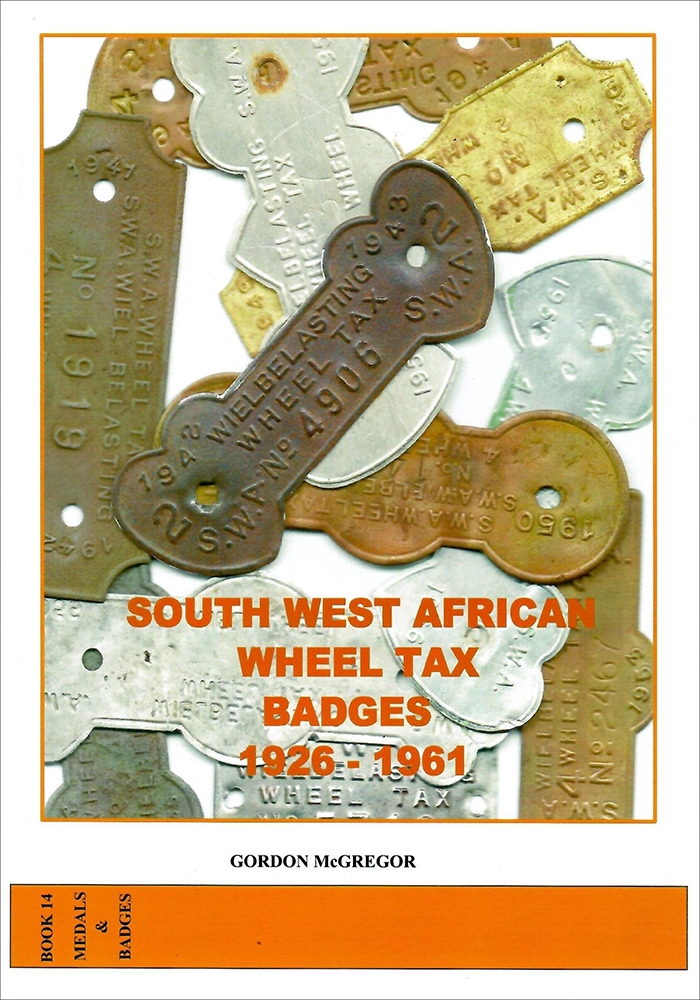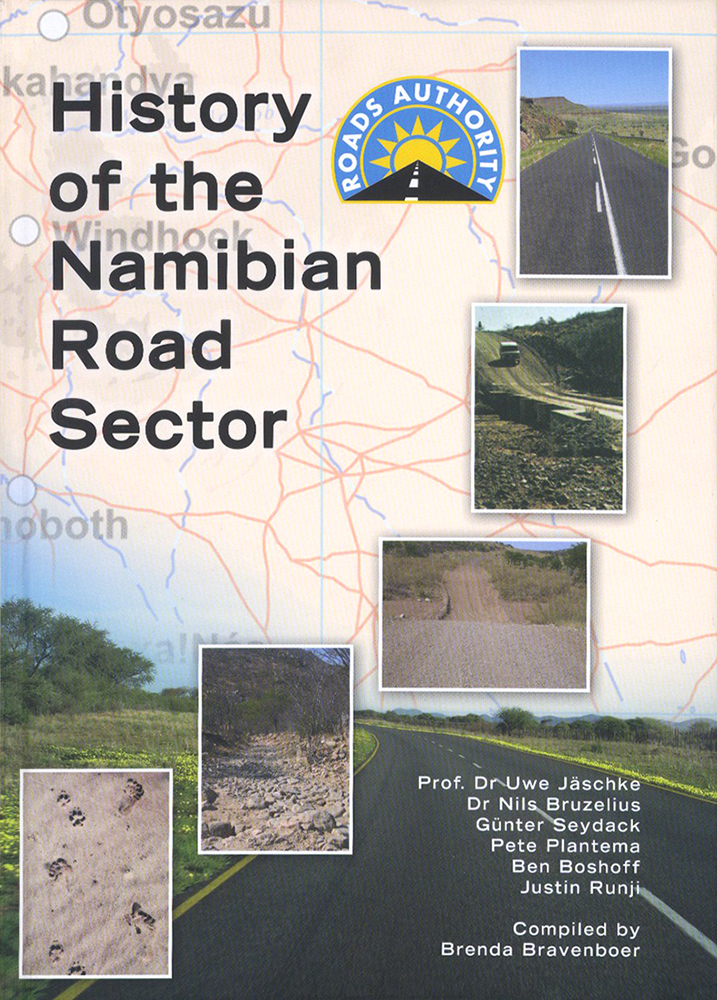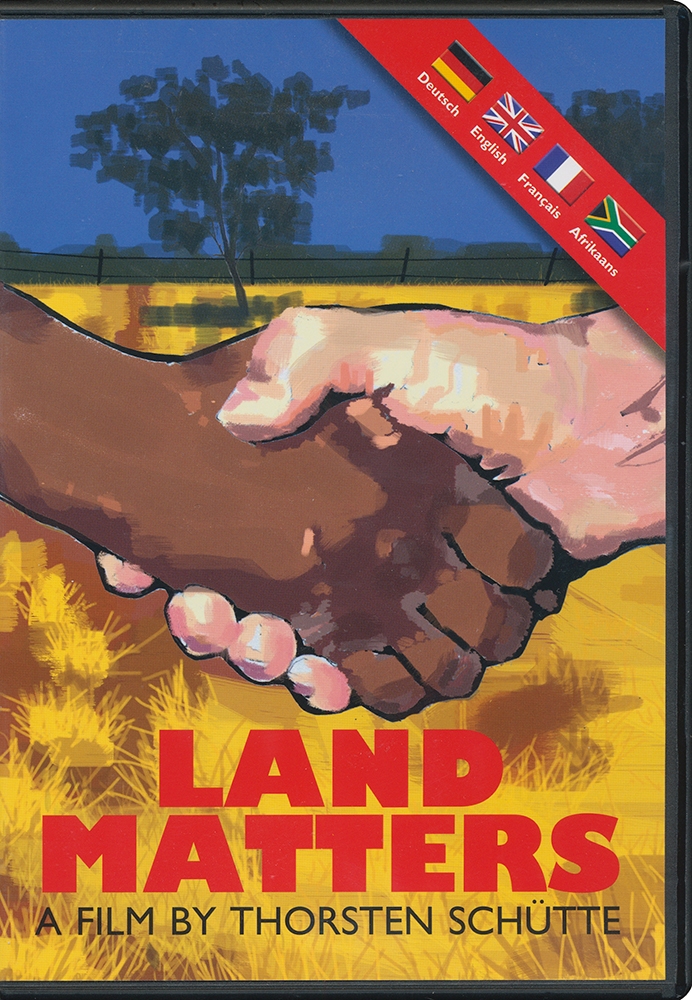South West Africa Survey 1974, by the Department of Foreign Affairs of the Republic of South Africa
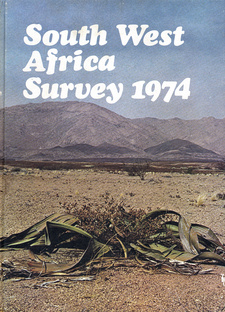
South West Africa Survey 1974, by Department of Foreign Affairs of the Republic of South Africa. Pretoria, Cape Town
The following text is content from the South West Africa Survey of 1974, published by the Department of Foreign Affairs of the Republic of South Africa.
Demographic Features and Historical Background
The relatively well-watered and wooded north-eastern part of the Territory became in pre-colonial times the home of settled tribes of Bantu pastoralists and agriculturalists. These were the Owambo and the tribes along the Okavango River. A similar way of living prevailed among the tribes of the Eastern Caprivi Zipfel, a region which is virtually isolated from the rest of the Territory at certain seasons by waterlogged, swampy terrain. These northern tribes bred cattle, planted crops and fished the rivers. They built relatively substantial structures which reflected their settled mode of life. They showed no interest in the southern or central parts of the Territory where natural conditions were unsuited to their traditional ways. Thus before and after the advent of the White man these tribes had little or no contact with the southern part of South West Africa. Their contacts, whether peaceful or warlike, were among themselves, or with their kinsfolk across the borders of what are now Angola, Zambia, and Botswana. Their remoteness, numbers and organised mode of living also protected them against raids by the nomadic tribes of the southern and central part of South West Africa. Almost 60% of the Territory's population live in these northern areas. The inhabitants of the Eastern Caprivi are of Bantu stock, but are not related to any of the other Bantu clusters found in South West Africa, i.e., the Owambo and the Kavango peoples or the Herero. The Caprivi Zipfel became a part of South West Africa by a quirk of history. In an agreement of 1st July, 1890, the British Government recognised that the area in question (subsequently named after the German Chancellor, Count von Caprivi) would thenceforth fall within the German sphere of influence, so as to provide access from South West Africa to the Zambesi. In fact the Eastern part of the Caprivi is cut off from the rest of the Territory by large swamp areas. The main groups in the Eastern Caprivi are the Masubia and the Mafue. Together they constitute almost 90% of the population, small numbers of the Mayeyi, Matotela, Mashi and Mbukushu tribes making up the rest. The western part of the Caprivi Strip is inhabited only by wandering bands of Bushmen. The Kavango peoples (to the west of the Caprivi) comprise five different tribes, namely Kwangali, Sambyu, Mbukushu, Mbunza and Gciriku. The Owambo nation (to the west of Kavango) consists of seven tribal or community groups, viz. Kwanyama, Ndonga, Kwambi, Ngandjera, Kwaluudhi, Mbalantu and Kolonkadhi-Eunda. Together they number some 396 000 constituting about 46% of the total population of South West Africa, the largest national group of the Territory. Due to their settled form of existence, the northern peoples of South West Africa escaped the large-scale violence and bloodshed which in earlier days were endemic among the nomadic tribes of the central and southern parts of the Territory. Among the earliest inhabitants of the latter areas were the Bushmen, the Nama and the Dama. The Bushmen were a nomadic people who subsisted entirely by hunting game and gathering the wild fruits of the veld. They kept no cattle and planted no crops. They lived in a state of continual enmity with other more powerful peoples who deprived them of the best hunting grounds and whose cattle they raided. The Nama or Hottentots resemble the Bushmen in appearance, being a short, yellowish or reddish-brown skinned people. [...]
This is an excerpt from South West Africa Survey 1974, by the Department of Foreign Affairs of the Republic of South Africa.
Title: South West Africa Survey 1974
Publisher: Department of Foreign Affairs of the Republic of South Africa
Pretoria, Cape Town 1975
Original clothbinding, 20 x 28 cm, 150 pages, numerous colour photos
Department of Foreign Affairs of the Republic of South Africa im Namibiana-Buchangebot
South West Africa Survey 1974
South West Africa Surveys was a regional, economic, geographical and political, irregularly published annual outline.
Weitere Buchempfehlungen
South West African Wheel Tax Badges 1926-1961
The wheel tax metal badge came into existence as a result of Ordinance No. 6 of 1926 of the South West Africa Administration. The last badge was issued in 1961.
History of the Namibian Road Sector
This an impressive, most interesting documentation of history and developement of the Namibian road sector.
Land Matters. Strategien als Reaktion auf Auswirkung der Landreform in Namibia
Wie Farmer in Namibia Strategien als Reaktion auf Auswirkung der Landreform entwickeln und ihre Gedanken darüber zeigt der Film Land Matters.

